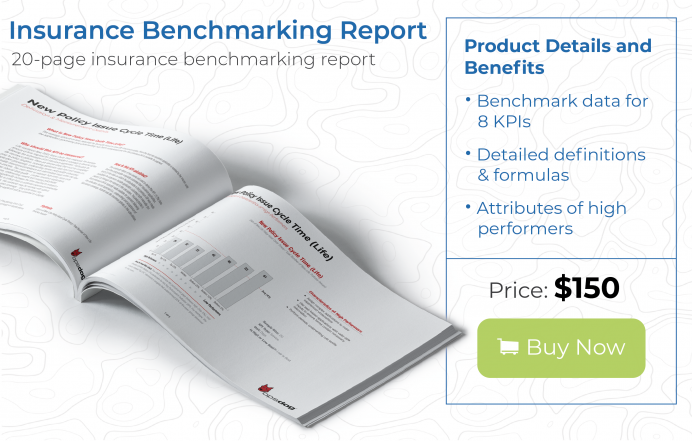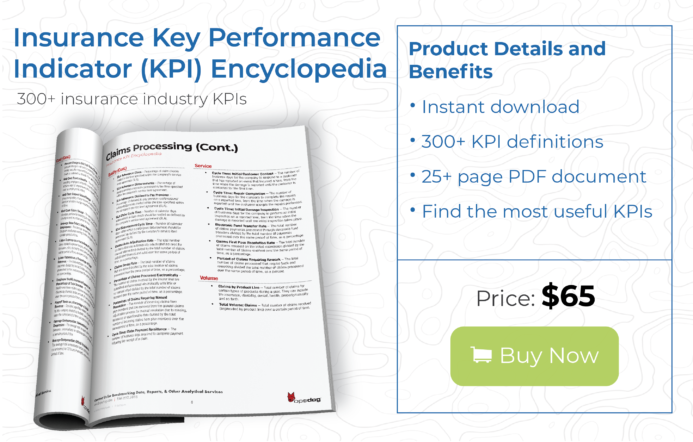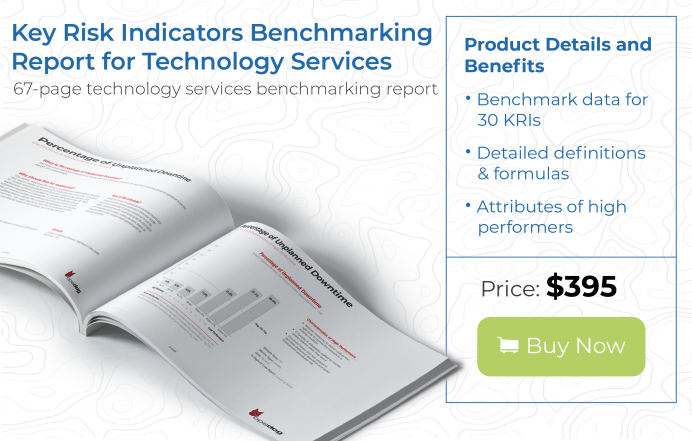Insurance agencies are the face of the insurance carrier. While customers enjoy the convenience of digital channels, they also want to deal with a local agency when they have questions or problems. With increasing competition in the insurance industry, insurance agencies can have a big impact on how an insurer is perceived in the marketplace by using insurance industry performance metrics to stand out.
What is an Insurance Agency Performance Metric?
Insurers use key performance indicators (KPIs) and key risk indicators (KRIs) to measure both their overall agency performance and the performance of individual agencies. Often represented as percentages, KPIs and KRIs differ in their focus. While KPIs can be defined as a measurement of how well an activity/metric is performing against an insurer’s strategic goals. KRIs, on the other hand, can be defined as a measurement of how likely an insurer will have a future adverse impact due to various unforeseen situations or circumstances.
KPIs and KRIs vary from insurer to insurer. Even within the same insurance product line, KPIs and KRIs will vary. KPIs and KRIs are not static but evolve as insurers update KPIs and KRIs to meet changing business needs.
KPIs and KRIs can measure the overall business or elements of the business. For example, insurers can apply claims denial rate to their overall claims process or analyze claims for a specific line of business, or even for an individual within a department. Typically insurers start with top-level metrics, and then drill down as needed.
KPIs and KRIs can be subjective or objective. Net promoter score is an example of a subjective KPI since it relies on customer opinions of an insurer’s performance whereas policy lapse rate is objective and based on statistical results. Used together, qualitative and quantitative KPIs and KRIs complement each other and give the insurer a more well-rounded view of business performance.
Insurance Agency Performance Metrics
Here are three KPIs and three KRIs that insurers can use to measure the performance of their customer-facing insurance agencies.
KPI Metrics:
KPI Insurance Agency Performance Metric #1: Customer Satisfaction (CSAT)
Insurers can use surveys to measure the customer satisfaction of any transaction or product, but the claims process is one that insurers tend to focus on. Afterall, customers who submit claims are at their most vulnerable and look to their insurer to make the situation right. A poor claims process can make or break the customer experience. If CSAT for claims is low, act quickly. Look at claims settlement turnaround times, claims triage procedures, employee training, and payout errors as possible causes of a low CSAT.
To calculate CSAT, divide the number of customers who rate their claims experience as satisfied or very satisfied by the total number of customers completing the survey, as a percentage.
KPI Insurance Agency Performance Metric #2: Net Promoter Score (NPS)
Net promoter score is often confused with CSAT, but while CSAT measures customer satisfaction at a point in time based on a specific experience, NPS measures long-term happiness or customer loyalty. A low score can indicate that customers are unlikely to recommend an insurer to friends and family. NPS is a big-picture view of how the insurer is perceived in the industry. A high NPS score is much sought after, since a high NPS has been directly linked to increased revenue.
NPS measures the number of promoters (customers who would recommend the insurer to others) compared to the number of detractors (those who would not). To calculate, subtract the percentage of promoters from the percentage of detractors. A NPS over 0 is considered good since there are more promoters than detractors.
KPI Insurance Agency Performance Metric #3: Billing Outbound Quality
Do customers receive their bills on-time? Are those bills correct? Are they sent to the right address? Billing errors indicate an inefficient or error-prone policy administration function. A highly manual or paper-based billing process can degrade billing outbound quality.
To calculate billing outbound quality, divide the number of bills sent late or with errors by the total number of bills sent, as a percentage.
KRI Metrics:
KRI Insurance Agency Performance Metric #1: Claim Denial Rate
Denying claims is a balancing act: deny legitimate claims and CSAT and NPS will plummet and insurers can expect to be embroiled in costly disputes. Insurers want a low claims denial rate—but not too low. Insurers that have an extremely low claim denial rate may be leaving money on the table due to claims leakage.
To calculate claims denial rate, divide the number of claims denied by the total number of claims processed, as a percentage.
KRI Insurance Agency Performance Metric #2: Policy Lapse Rate
Policy lapse rate measures the number of policies that are not renewed by policyholders. Policyholders can find a number of reasons not to renew, including too-high premiums, poor customer service, a bad claims experience, or better marketing by a competitor that lures them away. By comparing the policy lapse rate between agencies, insurers can learn from those agencies that have a low policy lapse rate and apply those learnings to agencies that are struggling to keep policyholders.
To calculate policy lapse rate, divide the dollar amount of insurance policies not renewed by policyholders by the total amount of renewed policies, as a percentage.
KRI Insurance Agency Performance Metric #3: Complaints Per Policy
Some unhappy customers don’t complain—but many do and tracking the number of complaints can give insurers visibility into a variety of issues such as poor customer service, lack of customer education, and excessive cycle times, to name a few. By tracking this metric over time—and implementing fixes to address these complaints—insurers can improve their NPS.
To calculate, divide the number of complaints received–whether by call center, agent, or online—by the number of policies, as a percentage.
Final Thoughts
Insurances agencies will continue to provide value to customers and insurance carriers. Regardless of how digital insurance becomes, customers still want access to a local insurance agency when they have questions or problems. KPIs and KRIs that measure insurance agency performance are a vital tool that insurers can leverage to make sure that the agencies they are doing business with are meeting expectations.
Are you tasked with reducing and minimizing insurance claims leakage? Find out how to accelerate those efforts here!
For a full list of agency performance KPIs other related insurance key performance indicators, download our Insurance Key Performance Encyclopedia here. If you’re looking for KRIs, you can find our Information Security & Tech KRI Encyclopedia for all your risk benchmarking needs!
If you require additional assistance in developing a KPI or KRI inventory to benchmark insurance agency performance then you may find our Insurance benchmarking report helpful. For even more information on our Benchmarking Research and business intelligence implementation services, contact us here. OpsDog can help your insurance company build a KPI tracking plan and provide you with presentation-ready, high-quality deliverables.



